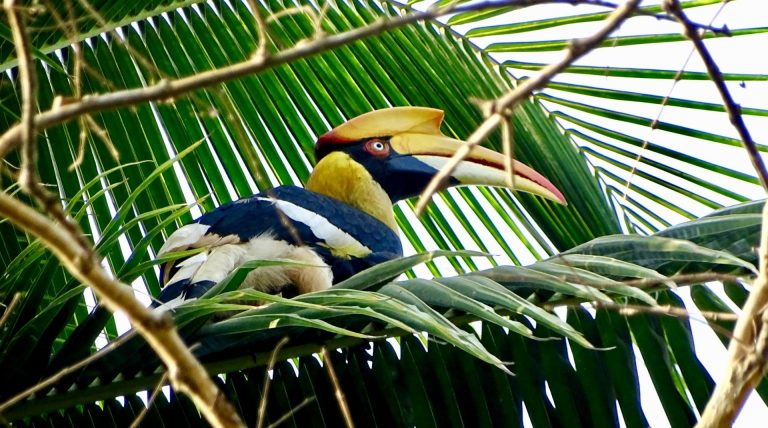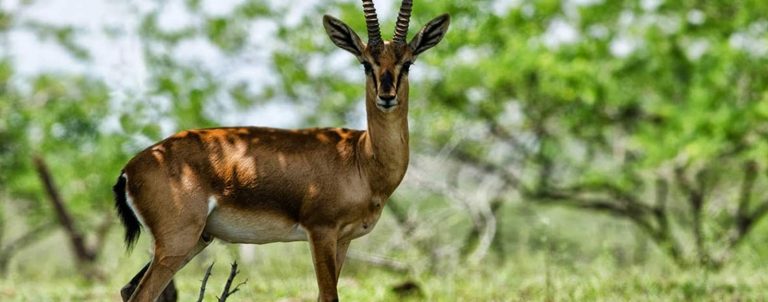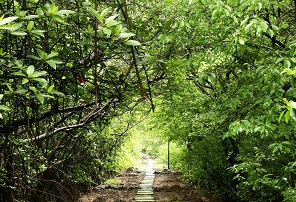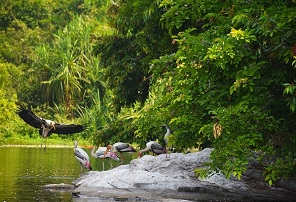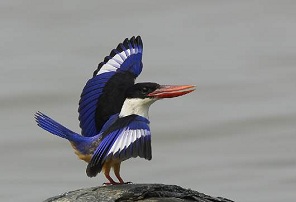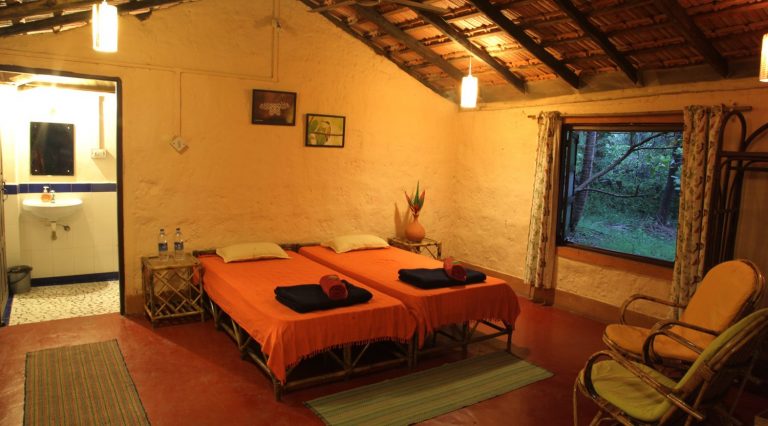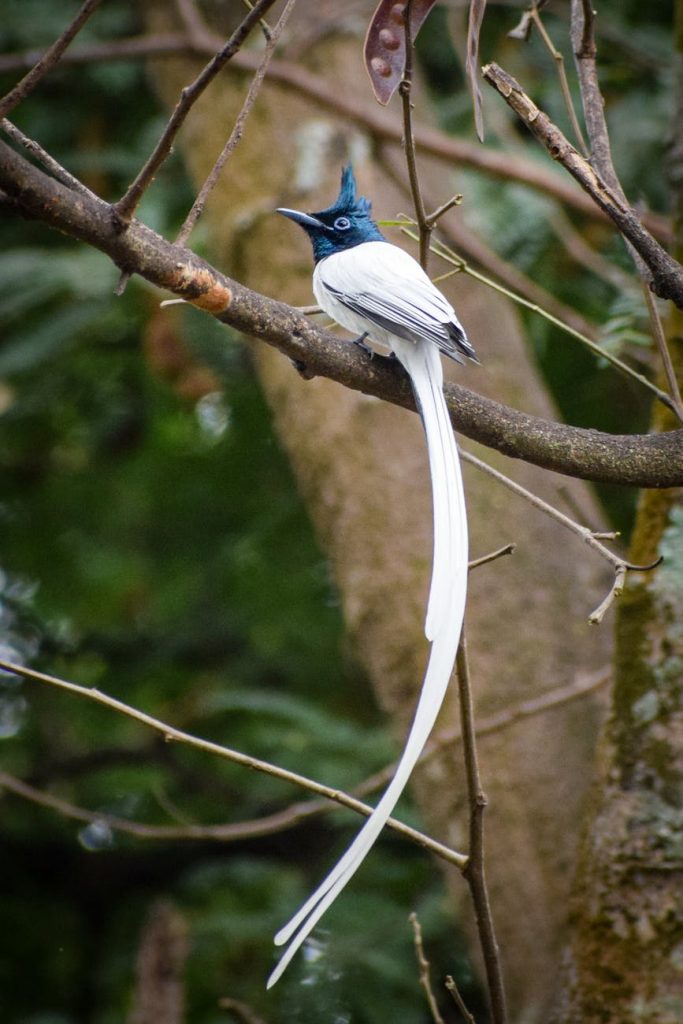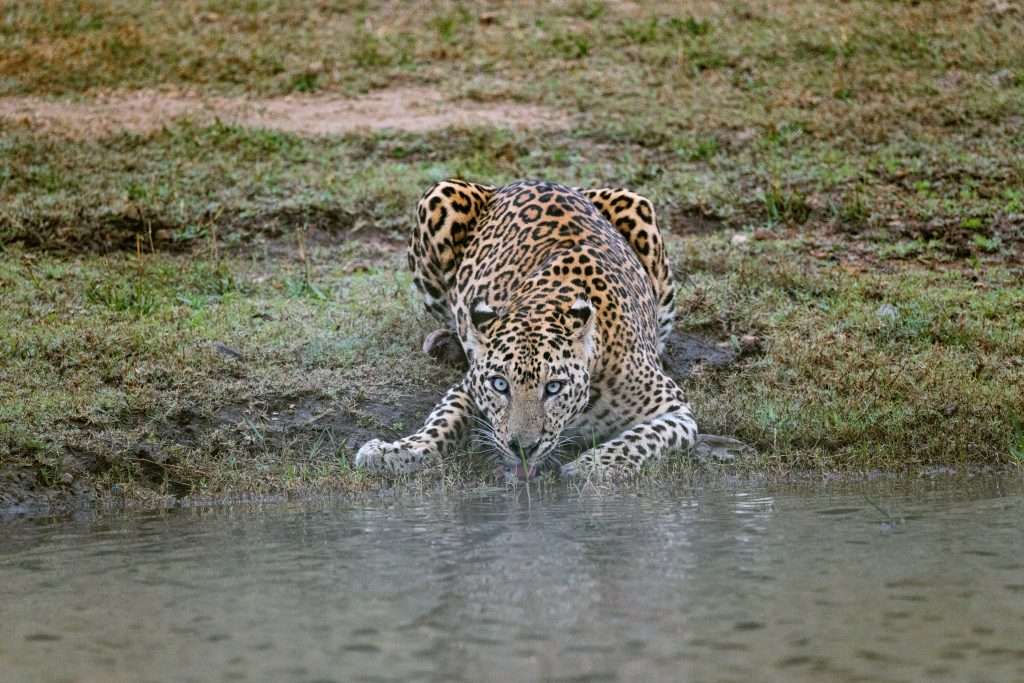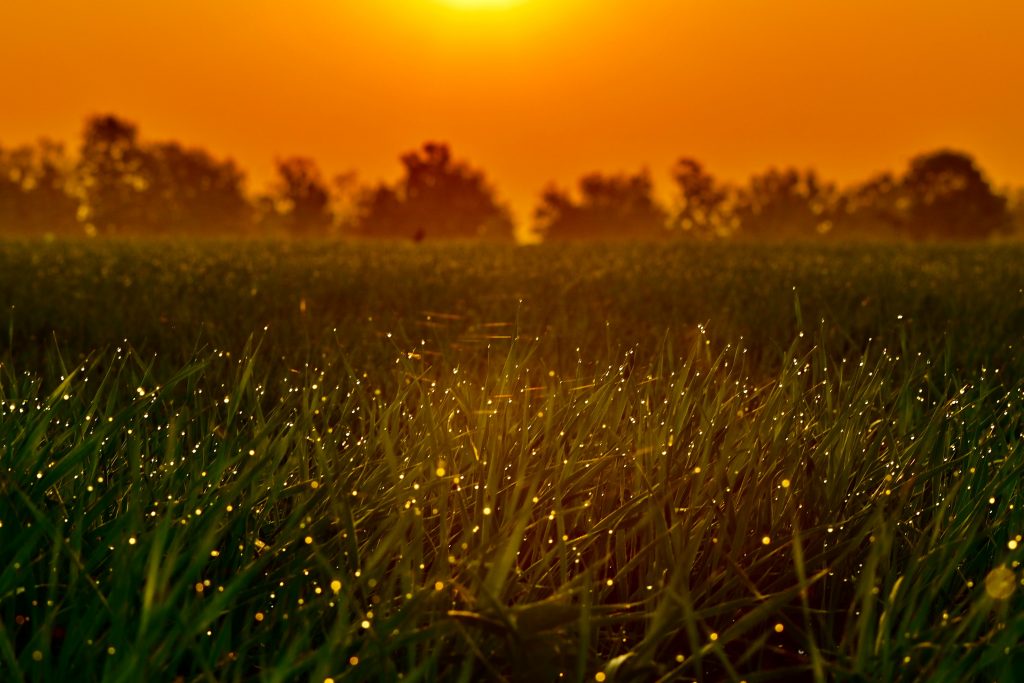- Overview
- Trip Outline
- Trip Includes
- Trip Excludes
- Important Note
- Things to carry
- Cancellation Policy
- Booking
- Gallery
Bhagwan mahaveer wildlife sanctuary:
Along the north from Panaji on the road to Belgaum, is a sanctuary that covers 240 sq-km. Thick forest clad slopes of the Western Ghats that is rich in wildlife and a paradise for bird watchers.The Bhagwan Mahavir Wildlife Sanctuary is located in the Goan town of Mollem. With a total area of 240 sq km, this is the largest of Goa’s four protected wildlife areas, and contains within it The Molem National Park.
The sanctuary is situated on the eastern border of Goa, with Karnataka 53 kilometers away from Panaji and 54 kilometers away from Margao. It is easily accessible by both road and rail.Unless you stay for at least a couple of days, it is unlikely that you will catch a glimpse of many of the animals that are sheltered in the sanctuary, including Gaur, Sambar, Leopards, Spotted Deer, Slender Tories, Jungle Cats, Malayan Giant Squirrels, Pythons and Cobras.
There are important geographical and historical features in this sanctuary. Jeeps on private arrangements go to the interior of the forest. The sanctuary is particularly known for its Leopards, Elephants, Deers & Gaur also known as Indian Bison.It is more convenient to view wild animals from the Devil’s Canon View Point. Bird lovers may also find their best time over here. The famous temple of Tambdi surla of the Kadambas is situated 13-km from here. In Mangalore to Margao journey on Konkan Railway one can enjoy the beauty of Dudhsagar through the windows.
Mollem has comfortable cottages and dormitories built by the Directorate of Tourism for accommodation. Police Outpost at the gateway of the sanctuary in calm and quiet surroundings is like a painting on a canvas in Mollem.The sanctuary’s setting in the foothills of the Western Ghats is wonderful and the countryside is one of the most peaceful that you’ll come across in Goa.
One hundred meters west of the entrance to the Molem Tourist Resort is the Nature Education Centre, where you can contact the Range Forest Officer, from whom you can obtain permission for vehicle access through the main park gate (which is about 3 kilometers east along the National Highway 4A). There is also an observation platform a few kilometers into the park and the best time to see wildlife is in the early morning or late evening.The Department of Tourism has built comfortable cottages and dormitories for tourists.
Bondla wildlife sanctuary:
38kms from Margao is the smallest of the three wildlife sanctuaries of Goa – the Bondla Wildlife Sanctuary. More than a sanctuary, it is an ideal jungle resort, a major attraction for school going children and nature lovers. Its mini zoo, sprawling deer park in natural habitat, botanical and rose gardens attract people throughout the year.
The Bondla wildlife sanctuary is about 50 Kilometers from Panaji and 38 Kilometers from Margao and 20 Kilometers east of Ponda. It is more of a jungle resort with tourist cottages available on site run by the Forest Department.
The common animals that inhabit the sanctuary are the Gaur and the Sambhar deer. It is a popular destination for school picnics. It is closed on Thursdays. There are tour buses that make a stopover at Bondla from Margao and Panaji. The Sanctuary is just 8 sq. km. in size, located among hills at the junction of three Talukas viz. Ponda, Sanguem and Sattari. It boasts of a Mini Zoo, Deer Safari Park, Formal Gardens, Botanic Gardens and Eco-Tourism Cottages. It is connected to Ponda as well as Molem by a good tar-road. Late evenings and nights are very pleasant. Bondla is a Paradise for Eco-Tourists.
The area is covered with Moist Deciduous Forests, with small patches of Evergreens and Canes along the nullahs. The State Tree Terninalia crenulata (Matti) and Rosewood are common here. Others are Lagerstroemia (Naked Maiden of the Forest / Nano), Kindall, Jamba, Mimusops, Saraca indica, etc. The thorny bamboo Bambusa arundinacea and Giant Lianas (Entada) abound.
Gaur the state animal is frequently seen. The Panther is the largest carnivora and the Jungle Cat, Leopard Cat, Toddy Cat are others. Herbivorous consist of Deers (Sambar, Spotted, Hog, Barking and Mouse) Wild Boar, Porcupines Scaly Ant Eater, and Malabar Giant Squirrel. The diminutive Flying lizard (Draco) is fairly common.Over a hundred species of birds are residents. The State Bird (Ruby Throated Yellow Bulbul) can be seen. And the Common Grey Hornbill and Golden Backed Woodpecker are daily visitors to the Garden.
Salim Ali bird sanctuary:
On the western tip of the island of Chorao along River Mandovi, mangrove swamps cover this bird-watchers’ paradise aptly named after India’s best-known ornithologist. This is Goa’s only bird sanctuary, 1.8 Sq Km in area. A variety of local and migratory birds can be found on this island.
From Panaji, one needs to take a bus or a cab to the Ribandar ferry wharf and then take a ferry across the Mandovi river to the island of Chorao. The sanctuary is within walking distance from the ferry wharf at Chorao. Open throughout the year, the sanctuary can be visited with the permission of the Chief Wild Life Warden, Forest Department, Junta House, Panaji. Apart from a rich variety of coastal birds, one may spot flying foxes, jackals and crocodiles.
The area consists of mangrove vegetation. Mangrove ecosystems are among the most productive ones known to us. They provide refuge and breeding grounds for several varieties of fish and insects which fall at the base of the food-chain.The “Mangrove Scrub” type of vegetation that is found here occurs in small isolated areas along the banks of Mandovi and Mapusa rivers and also along the Cumbarjua canal.
This Sanctuary is criss-crossed with a network of water channels. Hence movement is restricted to the duration of high tide, if one wants to go by boats. However for canoes, the creeks are accessible even during low tides. A watch-tower has been erected in the Sanctuary for better viewing of birds. Apart from the several resident birds, the Sanctuary also has some winter visitors like coots and pintails.
The Wildlife Division of the Forest Department proposes to start conducted tours through the water channels. It is envisaged that a group of 8-9 persons could be taken at one time. However, the exact modalities are yet to be worked out. Resource material and useful information could be acquired at the Range Forest Office at Campal, in Panaji.
About the property:
Get ready to experience one of the most mesmerizing birding hotspots in the world, rich in endemics, with our bird experts
Package includes a short birding trip to Goa covering the Western Ghats endemics. You can plan this trip if you are short on time, yet you would like to cover some of the key - species of the Western Ghats of Goa. You may extend the trip by a day or two at extra fees.
Key species include
Malabar Trogon, Malabar Parakeet, Malabar Pied Hornbill, Malabar Grey Hornbill, Malabar Wood-shrike, Blyth's Starling, Nilgiri Flowerpecker, Flame-throated Bulbul, Crimson-backed Sunbird, Blue-eared Kingfisher, Oriental Dwarf Kingfisher, Forest Wagtails, Western Crowned Warbler, Velvet-fronted Nuthatch, Sri Lanka Frogmouth and so on.
Region Western Ghats, Goa
No of Days Ex – Madgaon 03 Days
Grade Easy
Type Bird Watching
|
Day |
Itinerary |
Stay |
Meals |
|
Day 1 |
Madgaon – NN – Birding in BMWS |
Cottages |
L,D |
|
Day 2 |
Birding in Bondla – Night Trail |
Cottages |
B,L,D |
|
Day 3 |
Morning Trail – Madgaon |
|
B |
Itineraries
Day 1
Madgaon – NN – BMWS
After the arrival at Nature’s Nest, you will be welcome with a welcome drink at the reception area. After the check-in formalities, you escorted to your cottage.
Lunch is served between 12.30 pm. The buffet remains open till 2.30 pm. At 3.30 pm the evening tea is served and you set off for an evening birding session in the Bhagwan Mahavir Wildlife Sanctuary accompanying by our naturalist. The trail will be in the Tambdi Surla area of the sanctuary. You will be able to spot birds like Blue-eared Kingfisher, Brown-breasted Flycatcher, Malabar Whistling Thrush, Grey Junglefowl, Mountain Imperial Pigeon, Malabar Parakeet, Malabar Pied Hornbills, Malabar Barbet, Black-naped Monarch, Chestnut-headed Bee-eater, and Dark-fronted Babbler. You will be back at Nature’s Nest by 6.30 pm.
Dinner is served at 8.00 pm. Meanwhile, you can enjoy the bonfire and chit-chat…
Day 2
Bondla – Night Trail
The morning session starts at 6.30 am after the morning tea. You will be taken to Bondla Wildlife Sanctuary where you will be birding till noon. Bondla is one of the best locations for birding within Goa. You can spot birds like Grey-fronted Green Pigeon, Malabar trogon, Malabar Grey Hornbill, Velvet-fronted Nuthatch, White-rumped Shama, Asian Fairy Bluebird, Orange Minivet, White-bellied Blue Flycatcher, Black-throated Munia, Malabar Wood shrike, Black-hooded Oriole, Blyth’s Starling, and so on.
We return to Nature’s Nest for lunch. You again move out for an evening birding session after your evening tea. This time you will cover the forest around Nature’s Nest which is also part of the Bhagwan Mahavir Wildlife Sanctuary. You will be staying there till it gets dark so that you can spot some nocturnal species like Jerdon’s Nightjar, Jungle Nightjar, and Sri Lanka Frogmouth. You will be back for dinner.
Day 3
Morning Trail – Madgaon
In the next morning will do birding within the property for birds like Crimson-backed Sunbird, Purple Sunbird, Loten’s Sunbird, Little Spiderhunter, Vernal Hanging Parrot, Jerdon’s Leafbird, and Nilgiri flowerpecker. This will be followed by birding in the vicinity of Nature’s Nest. Post breakfast check out and drive back to Madgaon station. Drop at Madgaon.
Tour officially ends here.
- Accommodation on twin sharing basis
- Ground Transportation by AC Vehicle.
- Meals as per mentioned in the itinerary.
- All birding as per itinerary
- Night Safari
- Entry fees to the park
- Guide fee
- Professional Wildlife Naturalist host of the experience
- GST 5%
- Convenience fee
- Additional / personal use of vehicle.
- Extended stay due to weather conditions or any situation not in human control.
- Any personal expenses, room service and special orders, mineral waters, non-alcoholic beverages, tips, phone calls, laundry etc.
- Any extra excursions or sightseeing apart from the above specified itinerary.
- Cost incidental to any change in the itinerary due to bad weather, ill health, roadblocks and/or any factors beyond control.
- Camera fees.
- Adventure sports at the property.
- Airfare/Rail fare. (Ex Madgaon option)**
- Anything Specifically NOT mentioned in includes.
- Wildlife safaris/Bird watching is a matter of luck and opportunity. No guarantee of any sighting is made. Neither of our associates will quote that, although we try our best to spot and show you as much as nature allows us to.
- Birdwatching is a hobby and not a race, hence request all birders to maintain discipline at all times.
- Bird watching is an art of silence and key observation.
- Avoid Pointing out directly to a bird that might flush the bird away.
- Do not get too close to a bird for a photograph that you flush it away.
- Birdwatching should be enjoyed by binoculars and the fun is to spot them, identify them and if you still have some time with the bird photograph them.
- Never enter the forest with an intention of spotting a single species, it will only disappoint you. The forest is a gift packet with a lot to surprise with. Listen to our naturalist for more wonderful experience.
- Our walks are not target species specific (Unless specified)
- We explore everything we find uncommon and need to be explained.
- Any demand for spotting a single species in any jeep will not be entertained by the guide or the tour leader as there are other travellers who would want to see the birds etc.
- Respect & honour everything that is in the forest and it has to offer you.
- Enjoy being in the forest and you will feel much happier away from the concrete chaos.
- Respect the local, tribes, guards, guides, drivers, officers and all animals.
- Front seat of the Gypsy is always reserved for the Guide or Guard.
- No extra room will be made for photographers, respecting other travellers. (For photographers it is recommended to opt for higher options)
- No littering in the forest strictly. (what goes comes back the same way)
- Camera fees & guide tips to be paid separately & directly.
- Kindly follow the instructions given by the tour leader and the guide for your own safety.
- A Hat
- Sunglasses with UV protection
- A dust protection mask
- Personal Bottle (To avoid plastic use – 1LtrsX2)
- Small backpack for safaris (10Ltrs)
- Bird books
- Sun screen
- Only dull coloured clothes (Green, brown, Beige, Camouflage)
- Camera (At owners risk) with proper equipment for photography (As per need)
- Fleece/Jacket (temperatures drop in the forest to below 10 degree Celsius
- Binoculars
- Energy bars for safaris
|
Cancellation period |
Cancellation Charges on Cost |
|
More than 30 days |
25% |
|
30 to 21 days |
50% |
|
21 to 07 days |
80% |
|
Less than 07 days or No show |
100% |

